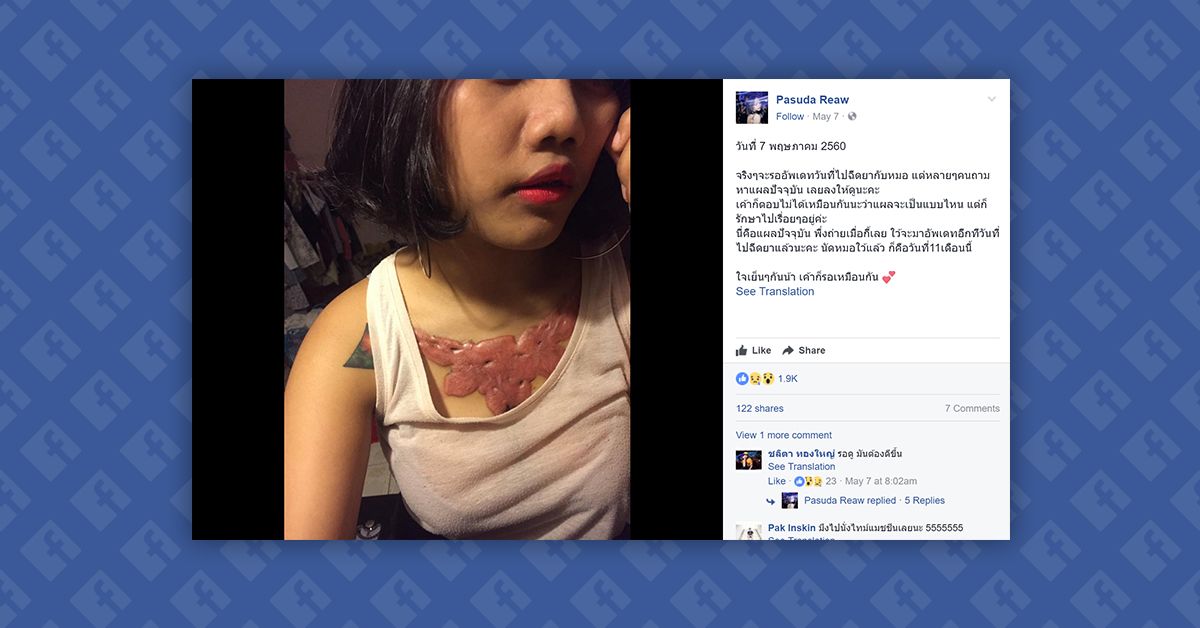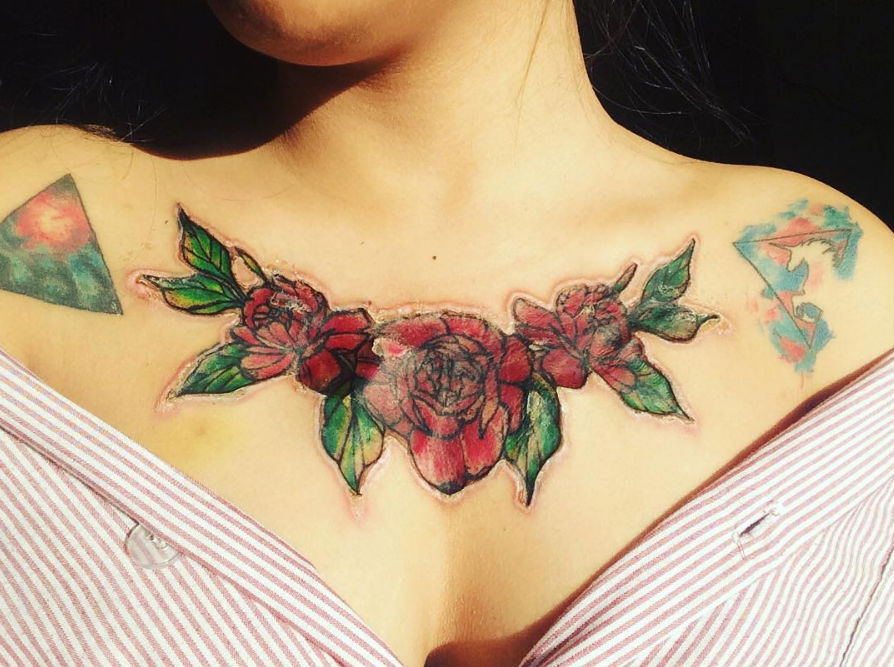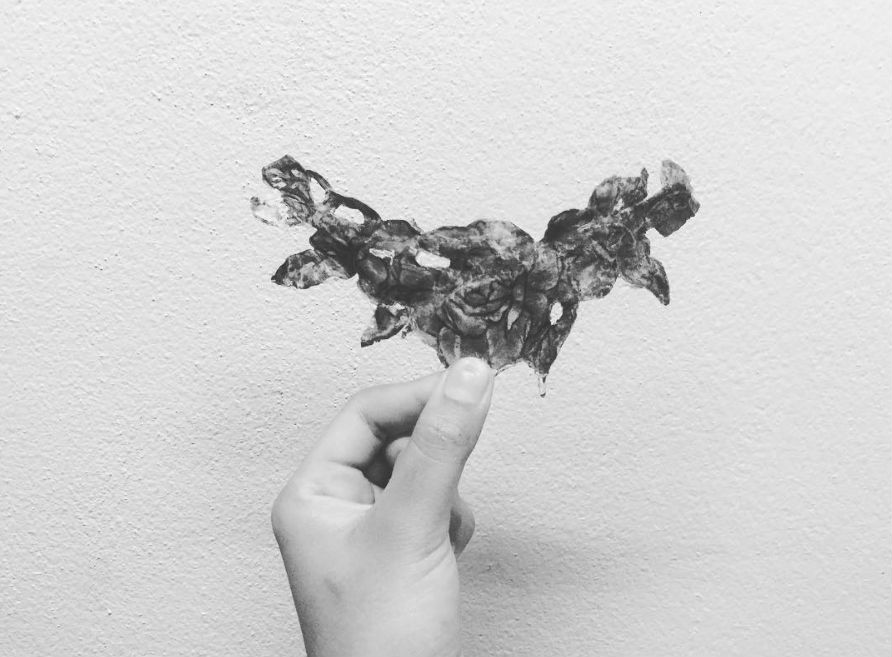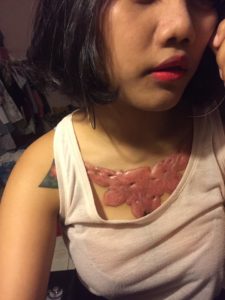On 12 May 2017, the Chilean news and entertainment web site BioBioChile.cl published an article about a young woman named Pasuda Reaw who was allegedly left with a large scar on her chest after she used a tattoo removal cream:
Pasuda Reaw decided to get rid of a tattoo on her chest and collarbones. To do this, the Thai teenager resorted to an erasing technique called Rejuvi.
This consists of a tattoo remover cream that is applied to the tattoo with the same type of needle used for tattooing. The chemical works by destroying the pigments in the skin and then transforms the tattoo into an easily removable scab.
The result, according to the BioBioChile, was a large scab that became infected, leaving Reaw scarred. As English language web sites picked up this article and photographs of Reaw's tattoo removal were circulated on social media, many people expressed skepticism about her story. However, the images are real:
While it sounds like a less risky procedure than laser removal, the truth is that it has caused some serious issues for those who have tried it. This was confirmed to BioBioChile by an employee of tattoo studio Tattoo 69, who brought this technique to Chile some time ago, but were forced to pull it from their study.
Reaw shared dozens of images documenting the tattoo removal process which started in February 2017. The first few photographs show that the method was working as planned at first. Here's an image from "Day 9" of the process:
By the 19th day, however, the skin had started to blister and the tattoo began to peel. The chest tattoo had fallen off about a week later:
Reaw shared an album of the tattoo removal process at the start of May 2017 to her Facebook page that was accompanied by a message warning people against tattoos (and attempting to remove them). The final photograph in the album shows Reaw with a thick pink keloid scar where her tattoo used to be:
Reaw's experience was not unprecedented: In 2015, a woman suffered serious burns after applying a tattoo removal treatment to her arm, and in 2014 a man was left with bumpy scars on his chest after removing a tattoo. In fact, both Health Canada and the FDA have warned against using do-it-yourself tattoo removal creams, cautioning that they can cause burning, rashes, and scars.
Rejuvi maintained us that Ms. Reaw did not use any of their products (as the BioBioChile article quoted above stated), asserting that "Rejuvi Tattoo removal is a professional use tattoo removal system and is not available or suitable for home application." Rejuvi said Ms. Reaw "used a home-made remedy given to her by a family friend," which they "believe [was] possibly battery acid, which is a fairly common home remedy" for tattoo removal.



